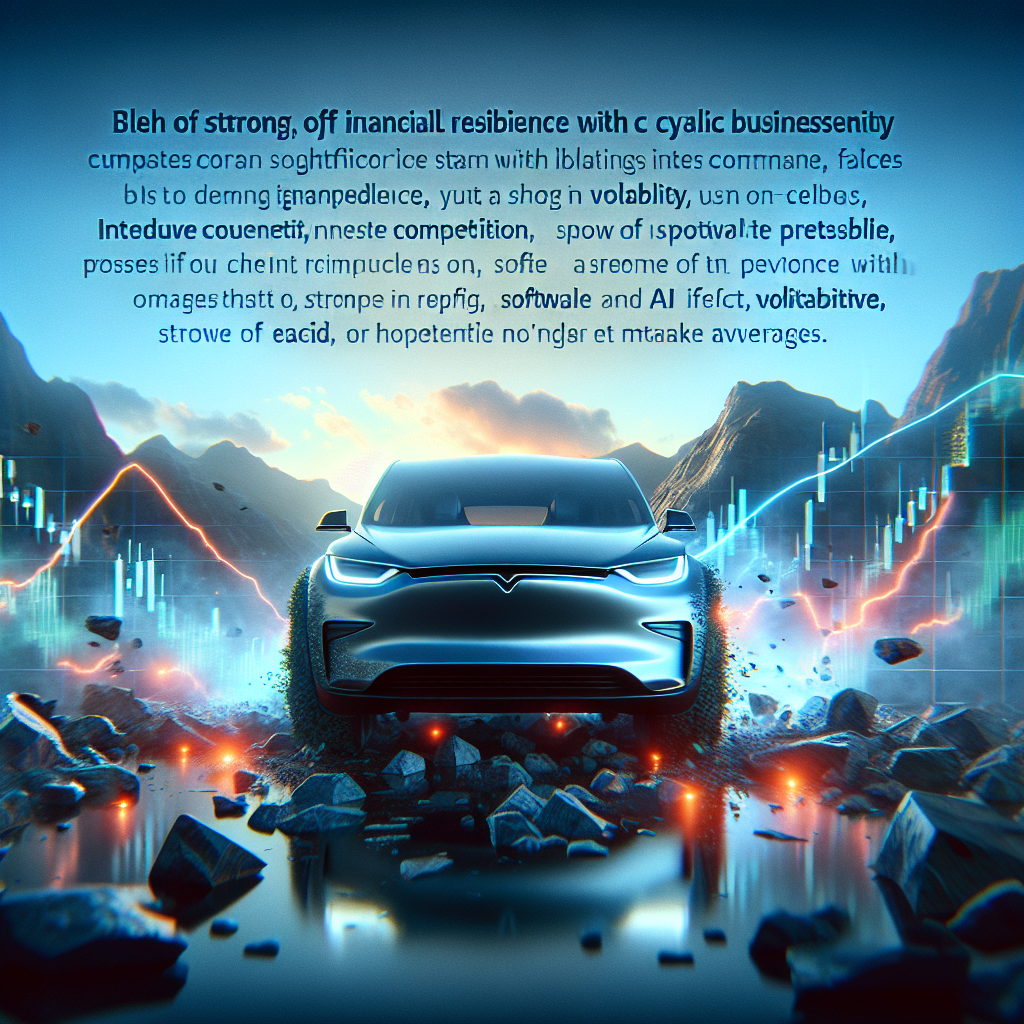
TotalEnergies SE enters August 2025 with resilient cash generation but softer topline trends. The stock has fallen 14.62% over the past year, closing the week at 53.50, near its 50‑day moving average of 52.89 and below the 200‑day at 54.27. Trailing 12‑month revenue stands at 187.12B with a 6.83% profit margin and 9.52% operating margin; net income is 12.79B and operating cash flow totals 28.2B. The forward dividend yield is a hefty 6.40% on a 3.4 per‑share annual rate, with a 64.42% payout ratio, and the next ex‑dividend date is 1 October 2025. Analysts covering the ADR cite a mid‑$60s consensus target, while a South African court has halted approval of a company oil block, underscoring project‑execution risk. Our three‑year outlook balances high income against regulatory and commodity uncertainty.

As of August 2025, Tesla’s setup blends strong balance‑sheet resilience with cyclical pressure on growth and margins. Trailing‑12‑month revenue sits at $92.72B while the most recent quarter showed a -11.80% year‑over‑year revenue decline and profit margin of 6.34%, underscoring price competition and product mix headwinds. Liquidity remains a strength with $36.78B in cash against $13.13B in total debt and a 2.04 current ratio. The stock’s 52‑week change of 69.48% highlights a powerful rebound, yet volatility (beta 2.33) and headlines around autonomy, governance, and legal matters keep sentiment polarized. Shares recently traded near $349.60 (8/27/2025), roughly between the 50‑day ($322.97) and 200‑day ($329.73) moving averages. Over the next three years, the investment debate hinges on whether software and AI monetization can offset near‑term auto margin pressure and legal or regulatory risks tied to driver‑assistance systems.

BYD Company (1211.HK) enters August 2025 with strong top-line momentum and a mixed near-term setup. Trailing‑12‑month revenue is 822.52B with quarterly revenue growth of 36.30% year over year, while net margin stands at 5.45% and operating margin at 4.95%. Return on equity is 23.07%, supported by vertical integration in EVs, batteries and energy storage. Liquidity is ample with 153.39B in cash against 41.13B in total debt, yet the current ratio of 0.81 and levered free cash flow of -13.38B flag ongoing reinvestment demands. Shares are up 56.11% over 12 months; after a 6:1 stock split on July 30, 2025, the price has consolidated near 115.10, below the 50‑day average of 120.800 but close to the 200‑day at 115.243. A 20.60% payout ratio and 1.23% forward yield offer modest income while the growth story evolves.

Toyota Motor (7203.T) enters late‑2025 balancing tariff headwinds with operational resilience. The automaker’s latest quarter showed pressure on earnings, and management cut its full‑year outlook amid U.S. tariff uncertainty, according to recent media reports. Yet the balance sheet remains deep, with ¥15.97T in cash, steady operating cash flow, and a forward dividend yield of 3.28% supported by a 27.68% payout ratio. Shares have been volatile this year—sliding to ¥2,407.5 in late March before recovering to ¥2,904.5 on August 27—while the 50‑day and 200‑day moving averages sit at ¥2,651.65 and ¥2,723.61, respectively. With TTM revenue of ¥48.45T, a profit margin of 8.82% and beta of 0.24, the stock’s three‑year setup hinges on policy outcomes, product mix execution (hybrid/EV), and capital allocation discipline.

Shell (SHELL.AS) enters the next three years with solid cash generation and a defensible balance sheet, even as revenue trends soften. Over the last twelve months, revenue stands at 272.01B with a 5.00% profit margin and 11.04% operating margin, supported by 49.07B in operating cash flow and 22.52B in levered free cash flow. Shares recently closed near 31.545, with 50-day and 200-day moving averages at 30.79 and 30.71, and a 52-week range of 26.53–34.22. The forward annual dividend yield is 3.94% with a 62.68% payout ratio, and the ex-dividend date fell on 8/14/2025. Ownership is broad-based (institutions 37.74%; insiders 0.04%), and beta of 0.31 implies lower volatility than the market. With quarterly revenue growth at -12.20% year over year but a slight positive earnings growth at 2.40%, the investment case hinges on disciplined capital returns and energy price stability.



